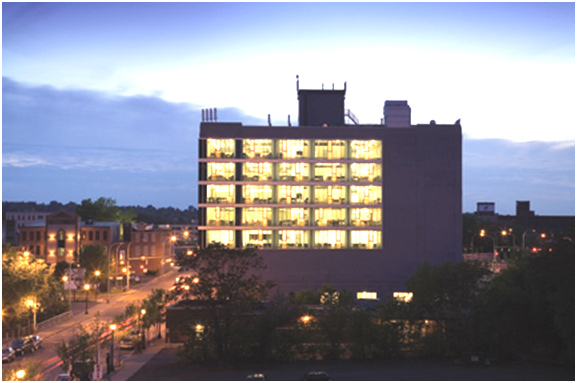IN THIS ISSUE:
Grantee Spotlight: University of Alaska Fairbanks Creates an Energy-Efficient Prototype Home for Harsh Winters
Wagner College Concentrates Civic Efforts in Port Richmond Community
Nancy Cantor: A Scholar in Action
Nancy Cantor: A Scholar in Action

Over the course of her career, Dr. Nancy Cantor has worked to establish universities as anchor institutions in the twenty-first century. Image courtesy of Syracuse University.
What role should public and private colleges and universities play in supporting diversity, social mobility, and economic prosperity? If you ask Dr. Nancy Cantor, the soon-to-be chancellor of Rutgers University’s Newark campus, she would tell you that it should be a significant one. During the course of her 35-year career, Cantor has led institutions of higher education to expand the scope of their scholarship and teachings, encouraging them to more explicitly address the challenges facing their local communities.
Cantor’s vision and leadership have been critical in promoting diversity in higher education and in defining the role of universities as anchor institutions in the twenty-first century. As both a scholar and an administrator, she has been strongly committed to what she describes as the “notion of universities as public goods . . . engaging the world, at home and beyond” — a model based on the university being a place where opportunity, diversity, and innovation come together.
As a social psychologist, Cantor is keenly aware of the importance of harnessing diversity to support the civic infrastructure of our society; “working across differences” of class, race, and gender is something that must be learned. Supporting diversity in higher education has been a defining element of her career. While serving as provost at the University of Michigan, Cantor was closely involved in defending the law school’s affirmative action policy in its challenge before the Supreme Court. The diversity of the city of Syracuse, New York, along with the region’s history of advancing African Americans’ and women’s rights, was among the reasons Cantor accepted the chancellorship of Syracuse University in 2004.
Scholarship in Action
As Syracuse’s chancellor, Cantor launched Scholarship in Action (SIA), a bold and transformative initiative that has invigorated the private university’s public mission through collaborations among faculty and students and a local, regional, and global citizenry. SIA engages the assets of the city and region and the resources of the university to create a synergy that supports new knowledge, innovation, and inclusive economic development. This synergy comes from “meaningful dialogue and . . . partnerships between the community and university that are reciprocating and long lasting,” explains Cantor. The result is a “collective impact” with benefits that cut across many dimensions of society.
These partnerships, which include residents, professionals, faculty, and students, ideally build “communities of experts” to address the Rust Belt city’s longstanding challenges, such as industrial decline, disinvestment, and underperforming schools. The product of this work is an ongoing, self-sustaining collaboration — what Cantor calls a “generative ecosystem” — that can survive government funding cycles and philanthropic changes in focus.

The Nancy Cantor Warehouse, along the Connective Corridor, has been named to honor Cantor’s legacy at Syracuse. Image courtesy of Syracuse University.
SIA is engaged in many ways across the city of Syracuse. Early in Cantor’s tenure, the university revamped a vacant and beleaguered downtown furniture warehouse, turning it into the home of the university’s architecture, visual arts, and communications programs. This move embedded the school in the community and created what Cantor describes as a “third space,” where stakeholders from various walks of life can interact and form communities of experts. The Warehouse is located on the Connective Corridor, a collaborative infrastructure project that physically and metaphorically links the school to downtown. The rebuilt street also creates an attractive environment for new investment in the arts, science, and technology.
SIA reaches well beyond the Connective Corridor. University faculty and students are part of expert communities working to revitalize the Southside and Near West Side neighborhoods. The school has also played a critical role in supporting citywide efforts at urban school reform through Say Yes to Education Syracuse — underscoring the chancellor’s commitment to “leave no group behind” in educating the next generation of leaders. Together, these investments in the city and its residents are cultivating the generative ecosystem that Cantor believes will sustain community engagement and the development of new ideas and innovations in the future.
Beginning in January 2014, Cantor will embark on a new challenge as the chancellor of Rutgers University-Newark. There, she will continue “paying deliberate attention to what it means to be an anchor institution” by working to engage collaborators across the city. Drawn by its location and by one of the most diverse student bodies in the country, Cantor is eager to help the school realize its full potential as an anchor institution. “Rutgers University-Newark is the epitome of a public good — an anchor institution in a major metro area that is . . . replete with extraordinary scholars . . . who are committed to making a difference in the world. . . What more could I ask?”


